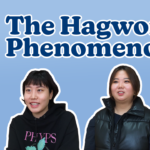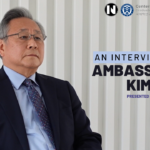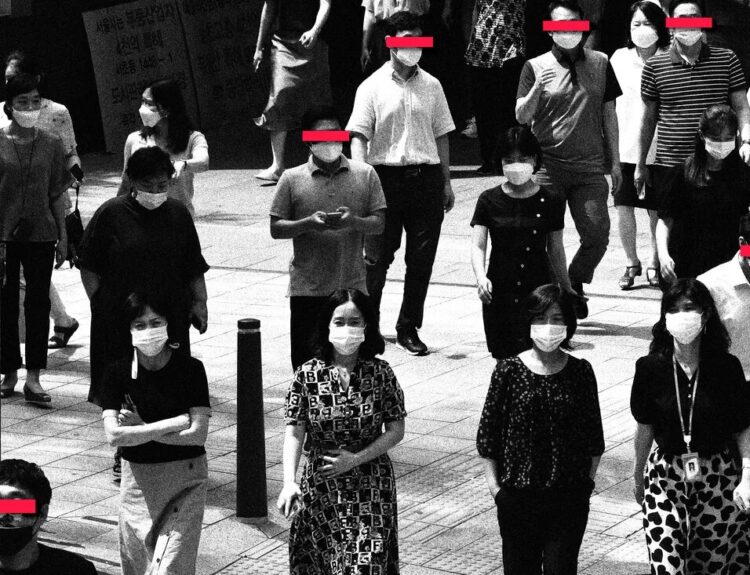The world is undergoing multiple crises. The headlines are dominated by global problems, from wars, the pandemic aftermath, and politics. We are bombarded by information on the daily, with facts that change the tides of democracies all at our fingertips. With the advent of new technologies, news is now at its most accessible. Information does not only come from organizations, but also from private individuals, influencers, or anyone who has an audience.
Information is now consumed in easily digestible videos, entertaining posts, and propaganda disguised as commentary all over the internet. Over the years, we’ve seen how these social media websites have become digital spaces where lies could spread unchecked, with misinformation being utilized as tools for war and deception, and political actors with their own agendas destabilizing democracy through deliberate disinformation.
Behind the scenes, a community of truth-tellers battle the constant barrage of lies. Nowadays, fact-checkers are known as the front-line soldiers in the war against disinformation.
Truth-tellers
Media literacy and critical-thinking skills are the primary tools of fact-checkers in the war against disinformation and misinformation. Misinformation is the proliferation of wrong or misleading claims, with no intention of doing so. Meanwhile, disinformation is the deliberate spread of false or fabricated claims with an intention to deceive its audience.
Newsrooms employ journalists who are dedicated to fact checking and verifying popular claims and so-called fake news. Fact checkers point out which posts are deliberately faked, altered and fabricated. They identify wrong information, review the content of these claims, and verify facts through multiple sources. Newsrooms usually focus on timely consequential content, such as posts about ongoing elections, campaign materials, or hoaxes and conspiracies that have gained traction on different platforms.
Fact-checking collective Tsek.ph coined the term “firehose of disinformation” to describe the growing practice of cross-posting fake news on different platforms, which expands the reach of lies. According to Tsek.ph, this “production and proliferation of high volume, multipronged and multi-platform falsehoods” is a strategy used to attack social media communities, using traditional media formats to bring fake news to multiple audiences.
The overwhelming spread of disinformation and misinformation on today’s internet has prompted the media industry to focus on the details and go beyond quotes. News organizations nowadays have dedicated fact-checking sections, where popular posts and claims spread on social media are scrutinized.
In recent years, social media platforms like Meta, Twitter and Tiktok have started working with third-party fact checking organizations and news publications to limit the spread of fake news on their global platforms.
For Meta, or more popularly referred to as Facebook, partnering with credible third-party fact checkers was the way to fight the spread of fake news. In 2020, Facebook worked with several news organizations like The Associated Press, PolitiFact and Snopes to fact check posts flagged as fake news across the platform.
Tiktok also launched COVID-19 information hub and partnered with the National Association for Media Literacy Education and MediaWise to educate users on digital and media literacy.
“While we’re proud to be providing this level of granular detail for the first time, we recognise that there is more work to be done. In the coming months, we’re investing in a number of initiatives,” Caroline Greer, director of public policy and government relations, said in a Tiktok blog post.
Global platform Twitter, known for its bite-sized viral posts made by prominent experts, politicians and influencers launched the Community Notes feature to add context to viral tweets. A fact-checking note is shown below potentially misleading posts, while false claims are also publicly tagged as fake news.
Fact checking and the COVID infodemic
The fight against COVID-19 was not limited within hospital buildings and medical clinics, as fake news spread just as fast as the virus. The internet became the main source of coronavirus information for a fearful and clueless public. The dangers of the virus were still relatively unknown, as governments scrambled to formulate science-based policies, and scientists set out to research about the deadly virus.
As the number of cases rose and the pandemic turned into a global health emergency, various conspiracy theories and claims about the virus also took over our digital spaces. The “infodemic,” or the term coined to describe the spread of false information about the pandemic, became another hurdle in the battle against COVID-19.
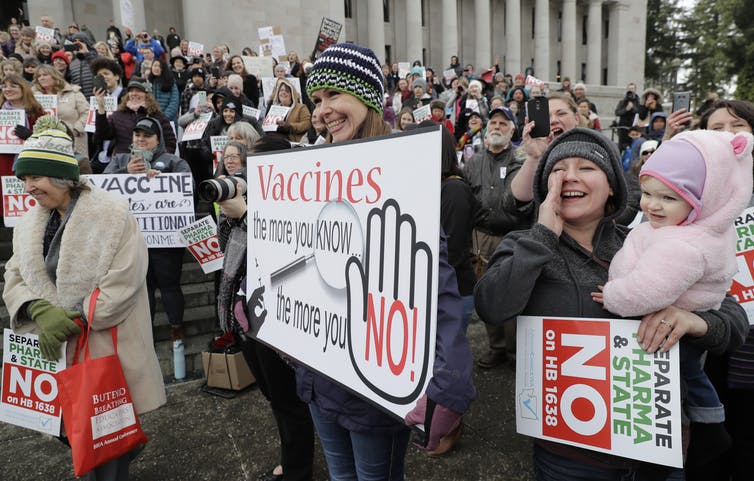
Anti-vaccine rallies in the United States. Source: AP News
The World Health Organization (WHO) also defines the infodemic as an “overabundance of information, some accurate and some not that makes it hard for people to find trustworthy sources and reliable guidance when they need it.”
The spread of baseless lies about the coronavirus increased vaccine hesitancy, affected community turnouts to vaccine rollouts, and local government policies. Unfounded claims about the antiparasitic drug ivermectin (commonly used for dogs) was even introduced by a local politician for clinical trials in the Philippines, despite opposition from doctors. Versions of the drug turned up in online shopping sites, with people attempting to use it to treat their symptoms. Conspiracy theories about COVID-19 also affected how people managed their symptoms, public health regulations and hospitalization.
A case lies in “Plandemic,” a conspiracy video that was shared multiple times on Facebook during the height of the coronavirus peddled anti-vaccination beliefs. The alleged interview starred Judy Mikovits, a controversial American scientist who is known for peddling inaccurate medical claims. Mikovits claimed that masks made people sick, and that the COVID-19 vaccine was dangerous and killed 75,000 people.
“Plandemic” was spread swiftly across multiple platforms, but was pinpointed by fact-checking organizations as completely false. It was then taken down by Facebook, but was republished on other sites.
Mikovits claims were used to justify vaccine hesitancy, repeated in anti-vaccine rhetoric despite being repeatedly debunked by credible scientists. Front and center for the public were unfounded beliefs about the dangers of the vaccine, the only way to curb the spread of the coronavirus.
Eric Nepute, a Facebook chiropractor and streamer, even urged people to drink zinc and quinine to treat their symptoms, despite no scientific evidence supporting his claims. Other remedies like eating garlic, taking herbal medicine, or steaming your face were shared through group chats, posts and videos, despite being repeatedly debunked by health officials.
The infodemic became the bane of many medical professionals, as it made their job of treating their patients twice as difficult. The infodemic has distorted facts, incited fear even among public officials tasked to deal with the aftermath of the lockdowns.
The new normal now included disinformation and misinformation about the virus that changed the way we lived. Fact checkers then sought to immediately pinpoint the baseless lies that spread about the virus.
“Whenever we see a new update on the coronavirus, there is always an explosion of false information,” Cristina Tardáguila, the associate director of the International Fact-Checking Network (IFCN) said in a 2020 International Press Institute online conference. Tardaguila recounts how COVID-19 “presented huge opportunities for fake news about the virus and potential curses to be spread.”
To combat the infodemic, organizations like FactCheck.org launched SciCheck, a project to verify viral posts about the coronavirus to ensure that misinformation and disinformation, can be contained. At the height of the lockdowns, the WHO also employed a fact-checking arm to take control of the infodemic.
Social media platforms such as Facebook helped out the WHO, saying that it will be working to limit the spread of misinformation and harmful content based on official guidance from the UN arm.
The infodemic has evolved into a public health problem, as the general public continues to be bombarded with erroneous or confusing messages on how to deal with the virus. As the pandemic continues to affect other areas in the globe, fact-checkers continue their work to correct misinformation, as they know facts continue to be necessary in dealing with the impacts of COVID-19.
Fact checkers in the fog of war
The necessity of these fact-checking efforts rings true in the middle of the war in Ukraine, where the rise of deepfakes (digitally manipulated videos to imitate or replace a person’s likeness) and altered photos and videos have led to changing public perception—as both sides try to take control of the battlefield narrative.
Social media has become an increasingly important platform for victims of the Ukraine war, where they share vital information about the realities they are confronting to the rest of the world. Ukrainians use social media to gain necessary support and donations, while the Russian government attempts to gain support for the invasion.
German news outlet Deutsche Welle (DW) has since debunked numerous manipulated photos, state propaganda and fake videos about the Ukraine war.

A post about the Ukraine War is labeled as Fake by German media outlet Deutsche Welle (DW). Source: DW
In a 2022 report, DW dives into the “information” war between Ukraine and Russia, debunking propaganda such as misleading claims about Ukraine nuclear weapons, fake military videos and fake posts alleging that photos of corpses in the Kyiv suburb of Bucha were staged.
Meanwhile, Fact-checking organizations like VoxUkraine are trying to survive the front lines while also debunking misleading social media posts about the current state of Putin’s invasion.
In a Washington Post report, Meta, Facebook’s head company, also confirmed that they have been providing significant resources to fact-checkers in the middle of the invasion.
In a statement from Meta spokesperson Ayobami Olugbemiga, it was confirmed that the company has “been providing significant resources to fact-checkers covering Eastern Europe to increase their capacity to help slow the spread of misinformation about the war in Ukraine and help ensure their safety.”
Fact checking and democracy
The election of then US President Donald Trump in 2016 gave journalists much to think about. Trump was able to spread baseless accusations and make claims that were grounded on lies. His tweets were reported by news outlets on the daily and amplified by mainstream media solely because he was the most powerful person in the land.
His statements as president were mostly incorrect, and the constant stream of lies prompted media outlets to launch live fact-checking initiatives and commentaries during his speeches and interviews.
Fact-checker Tardaguila also refers to shallow reporting as “bad journalism,” explaining how the regurgitation of politician’s false claims breed public distrust in legacy media organizations. She cites the reportage of president Jair Bolsonaro’s speeches as an example.
“We hear a lot of crazy claims spread by our President Jair Bolsonaro. But a lot of the press will just publish the unverified claim as a headline, with no analysis or fact checking whatsoever.” she explained.
The new president of Brazil, Lula de Silva, even created a secretariat on digital policies to address the spread of disinformation. In the 2022 Brazil Elections, the country’s Superior Electoral Court ordered the removal of disinformation content and demonetized videos that seemed like propaganda in support of Jair Bolsonaro, their much-criticized former president.
Fact-checkers verify the veracity of the words of our public officials, despite their supposed credibility. In a world of “he said, she said” journalism, they make sure that the public, in this case the voters, have access to accurate and correct information in order to make an informed choice, and are able to assess the government’s policies.
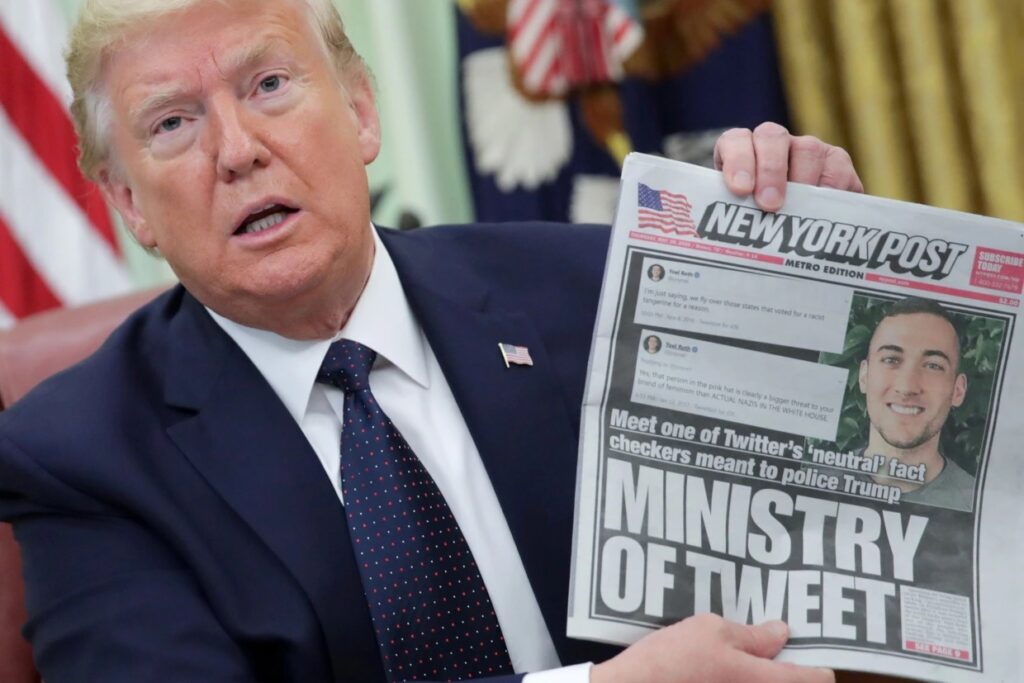
Source: Reuters
Journalists and their dedication to reporting facts have always been vital to democracies. Identifying fake news and misinformation are important in the crafting of public policy and implementation of social programs that affect the masses.
In a conference, fact-checking organization Vera Files founder Ellen Tordesillas identified the adverse effects of fake news. Tordesilla defines fake news as “falsified information disguised as news that is spread through one or several platforms, including social media, to deliberately deceive the audience and advance a political, ideological or other agenda.”
In the Philippines, independent outlets like Vera Files were attacked by troll farms during the elections. Vera Files, a member of the IFCN, has cemented their credibility as fact checkers with a team of veteran journalists and researchers determined to fact check and fight lies spread by the country’s most powerful. The organization was known for consistently correcting the gaffes and mistakes of presidential candidates in the runup to the Philippine elections.
Despite their role in maintaining democracy, these journalists were then attacked through social media. False claims about their biases such as Red-tagging, where state officials tagged them as part of the country’s communist movement, led to attacks on their websites and credibility. Still, Vera Files remains steadfast in its motto, making the truth their business.
“Fake news clouds our decision-making. We must hold people in power accountable. It’s a way of giving voice to the voiceless and catalyzing reforms. If things are based on the truth, governance will improve,” Tordesillas said in a 2019 lecture on “Democracy and Disinformation.”
The fourth estate
In 2015, the Poynter Institute of Journalism launched IFCN in an effort to strengthen the vibrant community of fact-checkers around the world. It pushes forward the global fight against misinformation through networking and collaboration. The IFCN has more than 100 organizations worldwide and provides support to new projects and initiatives that advance accountability in journalism.
As more social media platforms employ fact-checking organizations, their important work is now in the spotlight. Still, the diminishing trust in mainstream media organizations due to the rise of fake news on digital platforms has largely skewed public perception of journalists. Fact-checkers are the first line of defense in the information war, as they nip lies in the bud.
Factual and accurate information imbibes a democracy, and continues to be of utmost importance in an age where truth continues to be manipulated. As journalists remain on the lookout, it is also our responsibility as consumers to make sure that we critically consume the content we encounter in our daily lives. As such, fact checking needs to be consistently integrated into social media platforms, as every tweet, post and 15-second video has the power to change the tide of democracies.
- In Medias Res: How the press makes and breaks global affairs - October 31, 2023
- Fact checkers on the digital front lines: The war against disinformation on social media - August 3, 2023
- Trash talking: The imperialism of the global waste trade - May 14, 2023


